Places of worship
In Ireland, near Killarney, a mother goddess by the name of Anu or Annan was worshipped. The name Anu is identical with the Magyar words anyu, anya and anyag (mother and matter). It is noteworthy that, in Ireland, this name has been applied properly to express motherhood, a female concept. In Mesopotamia, farther away from the ancient civilization of the Carpathian, the name Anu underwent a radical change, due to the misunderstanding of an acquired mythology, and Anu became a male deity. The road leading to this misunderstanding is easy to follow and to explain but would take us far from the goal of the present study. The name Annwfyn (pronounced Anuvin) seems to bear connections with the Magyar an, anna, anya, anyag (mother, matter, land) and the fény (light) words. These give a meaning “the land of light” to the composite Annwfyn.
An important ancient landmark of male-female symbolism is the giant circle of Men-on-Toll with a phallic symbol in the same visual range, at the edge of life-giving waters. Visiting women had to circle this monument nine times to make their prayer more effective. This ancient place was the gathering place for women hoping for increased fertility, the birth of a new life. The number nine (kilenc) and the circle (kör) belong to the cultic vocabulary of the Körös-Magyar group.
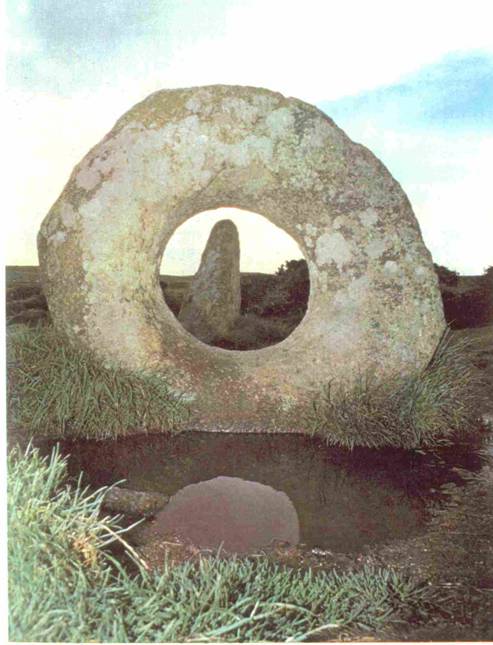
Figure 12. Men-on-Toll in Cornwall.
Britain’s most important place of worship was at the monument we call Stonehenge today, a circle of huge stones. According to local legend, the giants who built it came from Africa. It was believed that these stones had healing properties. Its old name was simply Chorea Gigantum, the round dance of the giants, or just simply: The Circle. The blue stones of Stonehenge came from the vicinity of Carmarthen’s Prescelly Mountains. Professor Geoffrey Ashe connects this structure to the round temples of Hecataeus of Abdera, which grace the lands of the Hyperboreans. He places the lands of the Hyperboreans on an island north of Gaul. According to legend, the stones of this temple at Stonehenge cannot be counted. Stonehenge II and III were built between 2,500 and 2,000 B.C. The later priests of this holy place, the Druids, were also Hyperboreans, according to Greek legends. The legends also state that Apollo visits their land every 19 years. It is a fact that the Druids created a 19-year calendar to reconcile the solar and lunar calendars, and this fact seems to connect them to the Hyperborean legends.
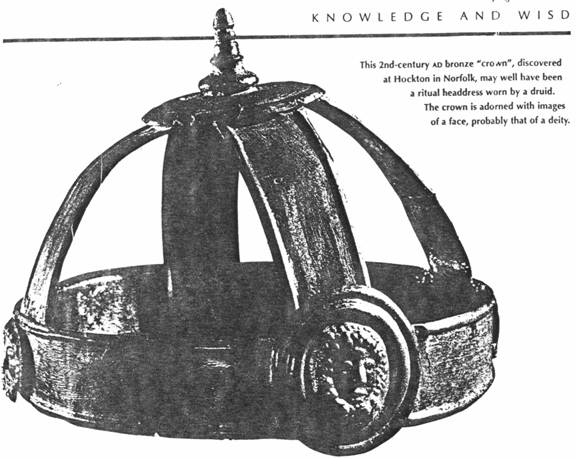
Figure 13. Druid helmet.
The ancient round temples of the Magyars are well known. The latest such church was excavated at Sárospatak Hungary. The church of Őskű also belongs to this type. The name Őskű means: ancient stone; the English word for church (originally kő-kör = stone circle) carries the same meaning. Recently it was reported in the Hungarian press that, in Kisompoly, in Transylvania, a Stonehenge-like structure was discovered,[1] which in all probability was a place of worship of a Bronze Age culture. Inside of this round structure a small hill of charcoal was found, probably the place of an eternal fire. This place is not far from Gyulafehérvár, ancient residence of the Gyula priestly class, which kept the light — both spiritual and material — in the forefront. The date of this stone circle, according to the director of the local museum, Horea Augudeen, predates Stonehenge by about one thousand years.
The Druids of Stonehenge were not only priests but constituted a priestly class akin to the Magyar Mag and Táltos priesthood. The name of the Druids cannot be explained with Indo-European etymology. A famous priest among them was called Mog Ruith, who, according to legend, was dressed in a suit of bull skin, over which he placed a bird costume and he was able to fly. Because of this legend, historians attempt to link him with the Siberian or Asiatic shamans with little enthusiasm.
Ariesteaus places Hyperborea “the land behind Boreas” into the Altai mountains. Abaris is also said to have come from Hyperborea. Later Greek historians give him a Scythian origin. They also call the upper portion of the Danube, which is the ancestral home of the Magyars, Hyperborea[2]. Adorján Magyar’s work deals with Sanudo’s early, 14th century map of Europe[3] where the island of Csallóköz, the mythical home of the fairies and the Magyars, is drawn as a huge island, covering almost half of Europe. He explains that this out of scale overstatement of size is attributable to the great importance of the ancient European origin myths, which this island symbolized. The name of Mog-Ruith is connected to Magor, the Magyar Sungod, the “Ruith” part is connected to the T-R word-group represented in the Arthur legend. Further research is needed to explore a possible connection of this name to the words rőt (red) or rúd (pole) words.
The Druids worshipped a God by the name of Esus or Jesu and for this reason they welcomed the first Christian priests. The names Esus or Jesu are of “pagan” origin and are identical to the names Jós, Jász, Jizzu of the god of light or shine of the Jász-Magyar peoples, represented by the Sun. The Jász people’s symbol of the fish for the Milky Way was discussed in connection with the Sarmatian-Iazyg history. Only much later legends connect this land with Joseph of Arimathea, who was supposedly accompanied by Jesus on one of his trade journeys. Considering that the tin mines of the British Isles were for a very long time a Phoenician monopoly, a possible affiliation of Joseph with the Phoenician culture-sphere needs to be reevaluated. Claudia and Linus, mentioned in Paul’s letters[4] in 63 A.D., may have originally come from this land.
Professor Geoffrey Ashe originates all great religions from the Hyperboreans in the following order:
Hyperboreans
1. the Greek cult of Apollo, out of which arose
...1.a the Pythagorean school
2. the Druids
3. the wisdom literature of the Vedas
...3.a. Sumerian wisdom literature
4. Wisdom literature of the lama monasteries of the Altai
I have to mention that the only sub-branch of the Pythagorean school outside Greece was in Carthage, where the land and people were very much connected to the settling of the British Isles and, according to professor Mészáros’ article, it was also closely connected to the Sarmatian-Alanic culture in Pannonia.[5]
Another common tradition of these places is the building of labyrinths, the meaning of which still eludes us. The recurring septenary maze in Rockey Valley near Tintagel is remarkable for its cross design intertwined with the seven lines of the maze. The cross in Magyar symbology is the symbol of light, the number seven was the holy number of infinity or eternity, according to Ipolyi. There is surviving memory that the Druids were able to see the mountains of the moon, which presupposes that they had some sort of telescope.
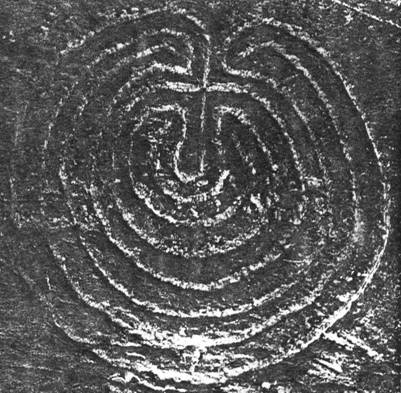
Figure 14. Septenary maze at Tintagel.
In spiritual matters, the Druids were occupied with bringing back the wisdom of the ancients. One of their holy ceremonies was connected with the oak tree and mistletoe. Their priests stood in the fork of the oak tree, just as in the ancient Magyar táltos ceremonies. They believed in immortality. According to Clement, Pythagoras learned from them. However, Stonehenge was the product of a pre-Druidic culture. The later Druids maintained their organization, which has two branches today. The Albion lodge initiated Winston Churchill in 1908.
Manopus is the name of an Irish divinity, who is represented with a harp in his hand. His representation is similar to that of Apollo but he was not considered a solar deity. This name is related to the Magyar divinity-name Mén.
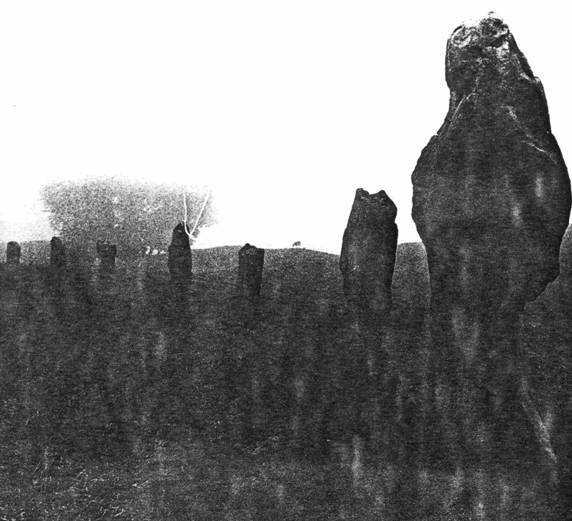
Figure 15. Avebury.
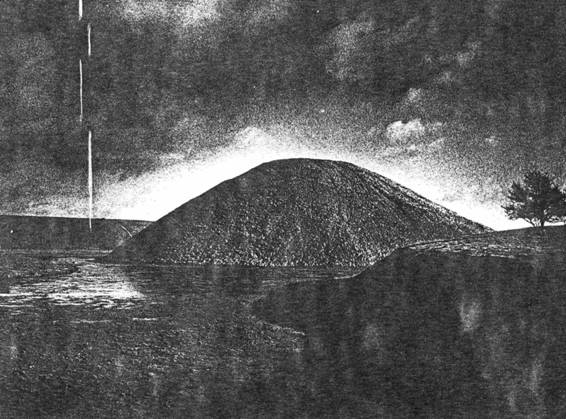
Figure 16. Silbury.
Avebury and Silbury are older than Stonehenge, according to modern research.
The name Avebury consists of the following Magyar syllables: év (circle) and vár (bury) giving it a meaning of “round castle”. According to legend, Silbury is the resting place of a king named Sil who was buried with golden armor. This name has a close affinity with the following Magyar words: Szil (pronounced Sil), a place name in Hungary and the final resting place of a Sarmatian Prince; a tree called szil-fa, which played a part in the ancient religion and Szél-úrfi (young master Wind) who was the symbol of the Sun’s energy, pollinating powers and fecundity. The constellations of Sellő (Mermaid) and Tündérfő (the Head of the Fairies) also belong to this category. It is interesting that, from these constellations, the fairies always arrive in a threesome as Sun, Moon and Star-mothers, according to Ipolyi’s research. These three mothers may be in the background of the Celtic triune of female figures. The watery surrounding of Silbury can easily be connected to the concepts of sellő (mermaid) and hableány (water nymph). The legend of the Lady in the Lake may point to such ancient affiliations.
The legend of the stone circle in Cornwall calls the stones “Merry Maidens”, and they can be counted only by women. These too come to life to dance in a circle like the stones of Stonehenge.
Ancient tradition remembers a time when the ancestors were able to fly.
Hengist was the Lord of Kent and his name is explained as “horse”. Both the name of the person and the place are connected to the word kan (male). The Hungarian name for mare is kanca in the same H/K-N word-group to which the Hun name also belongs.
The horse is important in the symbology of the British Isles". Most of these horses are white, like the Uffington horse, and there was one horse at Tysoe, which was red. King Alfred is also connected with the legends of the white horse; the king’s name is explained as “Elf-rede” which points to the ancient times of the Fairies. He was brave; his laws stopped the bloodshed so widespread in those days. In Magyar legends, the white horse was part of the lunar, the red horse of the solar symbology. One of the last legends involving a white horse is connected with Atilla and his peaceful act that spared the city of Rome. Mythology of the British Isles honored a horse goddess by the name of Epona and the Romans, who honored her as Regina, also adopted her cult. The name Epona seems to echo the name of the sun and light (nap and fény) of the Pannons, an indigenous, Magyar speaking culture of Pannonia on the western bank of the Danube, and their Mother Earth, Panna. The Pannon peoples’ symbolic colors were gold and red, the colors of the Sun. These two colors were the colors of Pendragon, whose name is also part of this consonantal group.
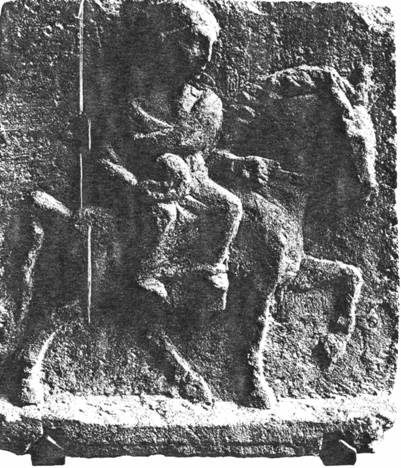
Figure 17. Epona.
Alfred’s son, Athelstan, lived in Northumbria and ruled Britain between 925-940 A.D. A great many stories are attached to his figure. One of these stories makes mention that he accidentally burned the cakes of a poor man in the fire. This reminds me of the ever-present motif of Magyar stories, the “cakes baked in ashes”. Here three ash-baked cakes accompany the hero of the story on a life-changing journey, aimed at defeating some evil force. In Athelstan’s story, the cakes are burned: it is a later, half forgotten version of the above story, wherein the ashes (hamú) are connected with the concept of home (hon). Athelstan’s name is related to the Etel, Atil names and the German edel.
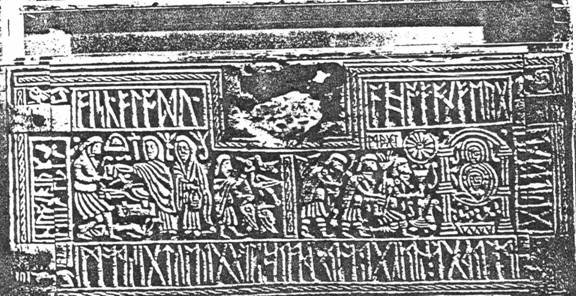
Figure 18. The rovás (runic) box of Northumbria.
Cerne is the place of worship of a divinity named Helith, Helis or Heil. The Giant of Cerne holds a huge club in his right hand and his phallic importance is obvious in this handiwork of ancient artists. The name of the place, the name of the divinity and the club he is holding are connected to the Magyar kör (circle) and kel (arise, i.e. the rising sun), kalló (club) and one of the names of the Sungod, Kallós, whose name was preserved in the names of Kolozsvár, Kolozs, city and place names in Erdély (Transylvania). Both the name and the representation are identical with Hercules of classical mythology, where the linguistic connection between Hercules and his club (kalló) does not exist, but which is strong in both the Magyar and the British mythology.
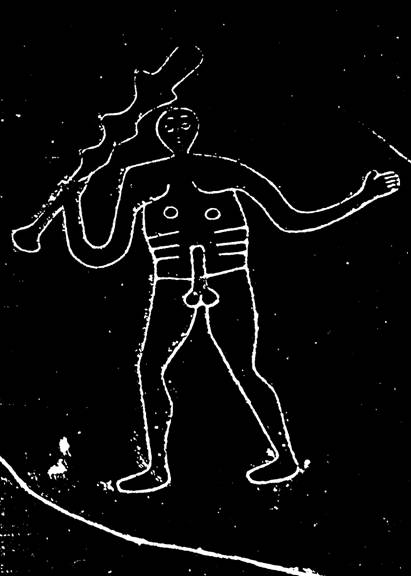
Figure 19. The giant of Cerne.
The most authentic of the Lays, lines of sanctuaries, is the one connected to Saint Michael. In another paper[6] I discussed the connections of the “pagan” St. Michael, who was called Mikelu, Makal and similar names and Magor, Makar, names of the sun god of the Magyars. The idea of the lays seems similar also to the Inca line of sanctuaries laid out in a sun-ray pattern with a center at Cuzko showing the antiquity and universality of this thought.
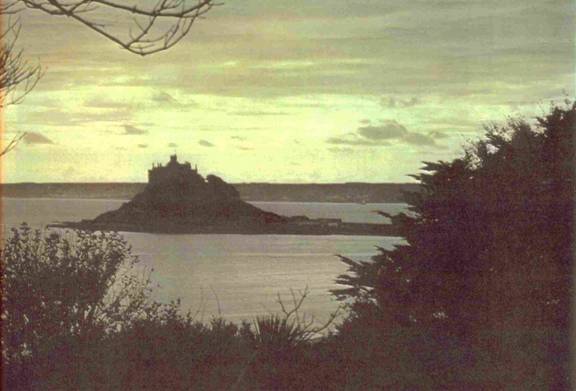
Figure 20. St. Michael’s mound.
The Temple of the Stars are ancient roads around Somerset’s Glastonbury which form the twelve figures of the zodiac. Its discoverer, Katharine Maltwood, believes them to be the work of Sumerians but, because of their huge size and great antiquity, her theory is questioned. Never having been in this region, I am quietly proposing the consideration of the following: These lines may represent frequently traveled roads. In ancient times nighttime travelers followed a “map of the sky”: they knew exactly which star pointed them in the right direction to travel from point A to point B. A similar ”compass“ is in use in rural Hungary even today, since each locale there has a representative star. Above Hollókő, the home of King Matthias Corvinus, there are two stars visible: it is believed that King Matthias and his beloved changed into these stars after their death. As another possibility, I propose that these ancient works may be the result of the genius and handiwork of the same peoples who began their lives in the Carpathian homeland as ethnic groups there and spread to the West as far as the Western seashore including the British Isles and spread to the Fertile Crescent in the East.
Celtic tradition holds that the name of Brennius, who was the lord of the northern part of the Isle, came from a god called Bran. This name means raven, and in fact, according to the Magyar law of reciprocity of words — which is also present in the English language in a latent manner — the two are but one another’s reciprocal forms. The English and Magyar words for raven and varjú belong into the same B-R word-group. Bran was the lord of the druidic Beltain, their spring festival. A divinity called Belinus or Belenos was known in Northern Italy and Southern Gaul, and both of these are identical with the sun god Bál, Béla of the Palóc people.
Welsh legends know of a Beli-Mawr (Beli the Great), or Beli, the son of Manogan, whom they honor as the ancestor of their people. The many geographical names containing the “-billing” affix are connected to the name of Belinus on the British Isles. Beli, the Welsh name of their progenitor and the Northern Italian deities, Belinos or Belenos, all lead to Bál, Béla Sungod of the Palóc nation. This name is also in direct relationship with the name of the Scythian Prince Palos mentioned by Diodorus Siculus. As I mentioned this name has no known etymology in the Germanic languages.
There is a belief in the mythology of the British Isles that male children are able to change their form to a stag, boar or wolf at will, then turn back again into human form. This belief system is connected to the Magyar concept of the Miracle Stag (Csodaszarvas) and the mythology of the boys who turned into a deer. This latter story is eloquently rendered in Bartók’s Cantata Profana. This legend is also part of the Oisin stories. A variation of this belief system is still celebrated among some of the American Indians, as part of a spring and fertility celebration and it is a testimonial to the expanse of mankind’s once unified belief system and culture. The boar was a symbol of the black Huns, the wolf of the white Huns in the age of pre-nation ethnicity.
Llyr’s son Manawydan, or Lir’s son Mannan is the name of an Irish Sea-god. In Magyar the lé, lőre (liquid, turbulent liquid) is connected with the name of the god Lir. Mannan reiterates the name of Mén (stallion), who frequently represented the Moon. To link the name of the Moon and the waters is scientifically correct, since the moon exerts a lot of influence upon the waters, especially the sea. The Welsh name for the Isle of Man is Manaw, the Irish name is Mana, Manu, which are also connected with the Magyar Mén. This frequently mentioned deity-name, Mén, has an enormous linguistic base in the Magyar language. Its comprehensive discussion is again beyond the scope of this paper, aside from a few representative words mentioned herein.
Arthur’s Queen Guinevere appears occasionally in three figures and for this reason she is believed to be the Triune female goddess of the Welsh mythology. Earlier we brought the Magyar parallel for this phenomenon as she may represent the Sun, Moon and Star-mothers of Magyar mythology. She may also represent the three phases of the moon depending on the contents of the legend.
The cult of the “Stone of Destiny” goes back to Pict origins. Their coronations used to take place in Scone, near Perth. The person to be crowned was seated on a stone. As Scythian descendants, the Scots occupied more and more lands. Finally Kenneth MacAlpine, claiming Pictish ancestry, had himself crowned King of the Picts and Scots. According to Scottish legends, originally a Princess Tea brought this stone to Ireland, where she married Tamair. Tara’s landscape is adorned with round, flat topped mounds clearly discernible even today.
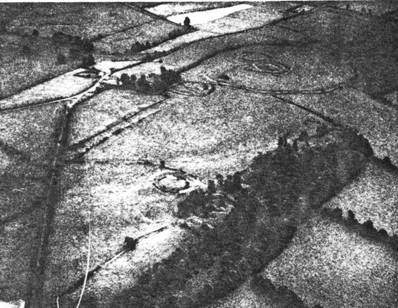
Figure 21. Aerial view of Tara.
Since the arrival of this stone, all kings have been crowned there. Prince Fergus, founder of Dalriada, brought the stone from Ireland first to the Island of Iona, and later the above-mentioned Kenneth brought it to Scone. Edward I. brought it to Westminster, and Queen Elizabeth II., with a magnanimous gesture, returned it to Scotland. Linguistic connections of the above are as follows: Considering the round, flat topped mounds of Tara it is reasonable to connect this legend and its people to the Magyar tár-tér (return, space), Tera, Turan mother goddesses. These names are also connected to Arthur’s name and legends. Iona’s name is connected to the name of the Jász nation, which has a form of Ion who left their mark in history as the indigenous population of Pannonia
The taking of an oath is part of the Magyar coronation ceremony. The word oath is eskű in Magyar and it contains the word kő, kű, meaning stone. According to Adorján Magyar some Magyar nations used to take an oath touching a holy stone, usually a meteor-stone called ménkű, mennykő (“Stone of the god, Mén”, or “Stone From Heaven”) which was considered pure, uncontaminated, coming from above. Such a stone is the Muslim’s famous black stone, called Kaba, or Csaba. The name Csaba originally meant a comet, and was also the name of one of Atilla's sons, and is still a popular name in Hungary. Legends hold, that when the Székely (Sicul) people (who consider themselves the direct line of remnants of the Huns) are in great peril, Csaba will return on the Milky Way with his army to the rescue. In this legend the Milky Way is called “The road of hosts” and the stars of this road are the sparks made by the horseshoes of this army’s horses. It would be interesting to examine the Stone of Destiny, to see whether it is a meteoric stone.
According to Christianized legends, the Stone of Destiny was used by Abraham as a pillow. The Easter Island culture used stones as pillows.
[3] Mario Sanudo: Liber Secretorum Fidelium Crusis. It was included in the Monograph of Pietro Vesconte’s World Map
[5] Gyula Mészáros A regölyi népvándorláskori fejedelmi sír Archaeologiai Értesítõ 1970. no.1 Akadémiai Kiadó Budapest.
Source: magtudin.org

